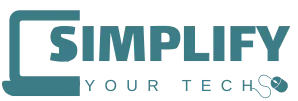Welcome to Tech Tips With The Tech Ninja!

Sales Funnel vs Sales Pipeline
“Knowing how your Ideal Client can find you - and how to bring them into your world - is critical for business success.”
~ Kat Milner
Introduction:
In the world of sales and marketing, two concepts often take centre stage: sales funnels and sales pipelines. While these are sometimes used interchangeably, they represent two distinct tools that serve different purposes in driving client attraction and managing customer relationships.
A sales funnel focuses on the customer journey—from initial awareness to final purchase—making it invaluable for nurturing leads and increasing conversions. On the other hand, a sales pipeline emphasizes the sales process, helping you manage and close individual clients more effectively.
Understanding the unique features, advantages, and limitations of each can help you determine which is best for your business—or whether a combination of both is the key to success. In this blog, we’ll dive into the critical differences between sales funnels and pipelines, explore their pros and cons, and offer practical tips for leveraging these strategies to grow your business.

What Is a Sales Funnel?
A sales funnel is a marketing concept that visualizes the process of guiding potential customers from initial awareness to making a purchase. Its shape represents the gradual narrowing of prospects as they move closer to becoming customers.
Key Stages of a Sales Funnel
Awareness: Introducing potential clients to your brand.
Interest: Engaging them with valuable content or offerings.
Decision: Helping them evaluate and choose your product or service.
Action: Converting them into paying customers.
How Funnels Work for Customer Acquisition
Sales funnels are designed to focus on the customer journey, ensuring every stage is optimized to reduce drop-offs and increase conversions. For example, a Life Coach might use a funnel to lead potential customers through a lead magnet and a free session before prompting them to sign up.
What Is a Sales Pipeline?
A sales pipeline is a visual representation of the stages that a salesperson takes to close a deal. Unlike the sales funnel, the pipeline focuses on the sales process rather than the customer journey.
Key Stages of a Sales Pipeline
Lead Generation: Identifying ideal target market and potential clients.
Qualification: Determining the likelihood of becoming a client.
Proposal: Presenting the product or service to the lead.
Negotiation: Addressing objections and finalizing terms.
Closing: Securing the sale.
How Pipelines Facilitate Sales Management
Sales pipelines help sales teams monitor the progress of individual deals, identify bottlenecks, and predict revenue.
For example, our example coach monitors the progression of their ideal client through their funnel. It keeps track of what has been offered (for example, a lead magnet download), identifies if the lead has stalled in the process, and it also predicts the potential revenue for the business.
A pipeline can also track clients from initial contact through to signing up for your offer.
Comparing Sales Funnels and Sales Pipelines

Key Differences Between Sales Funnels and Sales Pipelines
Metrics Tracked
Funnels: Measure broader metrics like website traffic, click-through rates, and conversions.
Pipelines: Focus on deal-specific metrics, such as win/loss ratios and sales conversion speed.
Roles in Sales and Marketing
Funnels: Primarily used to attract and nurture leads.
Pipelines: Primarily used to track and close sales.
Flexibility and Customization
Funnels are less flexible as they follow a predefined customer journey. Pipelines, however, are highly customizable to suit unique steps of different sales processes.
Pros and Cons of Sales Funnels
Advantages
Highly effective in nurturing leads at scale.
Simplifies the marketing strategy with clear stages.
Easily measurable for online businesses.
Disadvantages
Limited focus on post-conversion retention.
Pros and Cons of Sales Pipelines
Advantages
Provides control over individual deals.
Disadvantages
May require manual updates and regular oversight.
When to Use a Sales Funnel
Sales funnels are ideal for businesses focusing on lead generation. They excel at automating customer journeys through marketing automation tools.
When to Use a Sales Pipeline
Pipelines are best suited for businesses like Coaching practices that require a high-touch customer interaction. They ensure detailed management of each offer.
Integrating Funnels and Pipelines
Combining sales funnels and pipelines creates a cohesive strategy that optimizes both lead nurturing and deal management. CRM tools like HubSpot or Salesforce can seamlessly integrate these approaches, ensuring consistent customer experiences and better team collaboration.
Which is Right for Your Business?
The choice between a sales funnel and a sales pipeline depends on your business model and goals:
Opt for a sales funnel if your focus is on mass lead generation and automated customer engagement.
Use a sales pipeline if you prioritize personalized interactions and detailed deal tracking.
For many businesses, integrating both can deliver the best results by blending broad audience targeting with meticulous sales management.
Remember: When you keep it simple, you set yourself free.
How Simplify Your Tech Can Help
At Simplify Your Tech, our integrated system is the easiest way to set up and use both sales funnels and sales pipelines.
In Simplify Your Tech, your CRM, sales funnel, and sales pipeline are all connected, and work seamlessly together - allowing you to focus on your client attraction and closing your ideal clients.
Let’s get you and your business set up for success!
Let's compare Sales Funnels vs Sales Pipelines
If you haven't already joined the Facebook group, click here to be part of Simplify Your Tech with the Tech Ninja.


